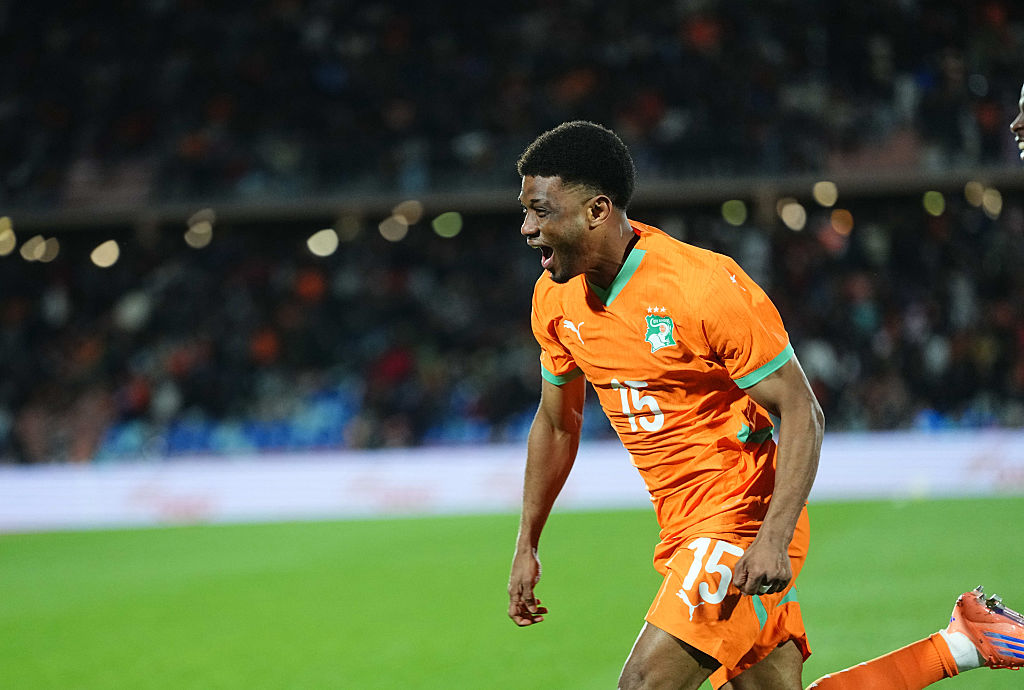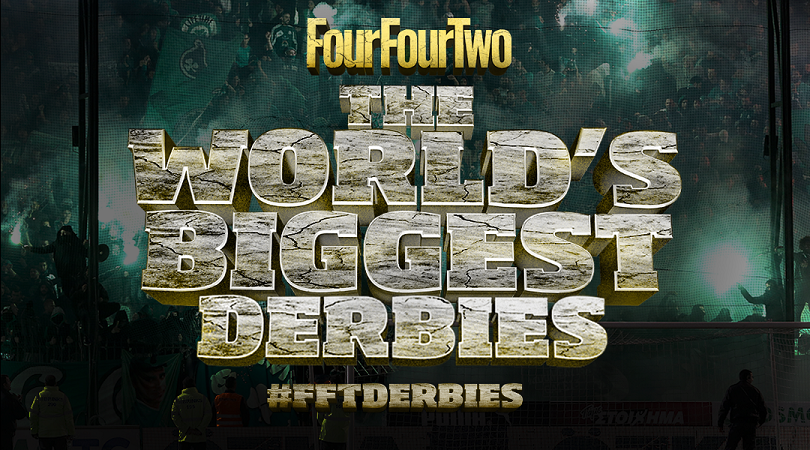
The world's biggest derbies
There’s no feeling quite like a victory in a derby match against your most hated adversaries. These are the games that decide who laughs last and loudest in the office, classroom, shop-floor and forum. These are the games you love to win and hate to lose. They can make or break your season – longer, if you’re in different divisions.
A quick note on inclusion rules. We've stuck to club teams and we haven’t chosen any team twice: no matter how many foes you despise (or how widely hated you are), you’re only allowed one mortal enemy.
The vast majority of these derby rivals are geographically close – the same city or the one just up the road – but there are some exceptions. Oh, and for each fixture we've listed the teams in alphabetical order: no, we don't think they're a bigger team than you.
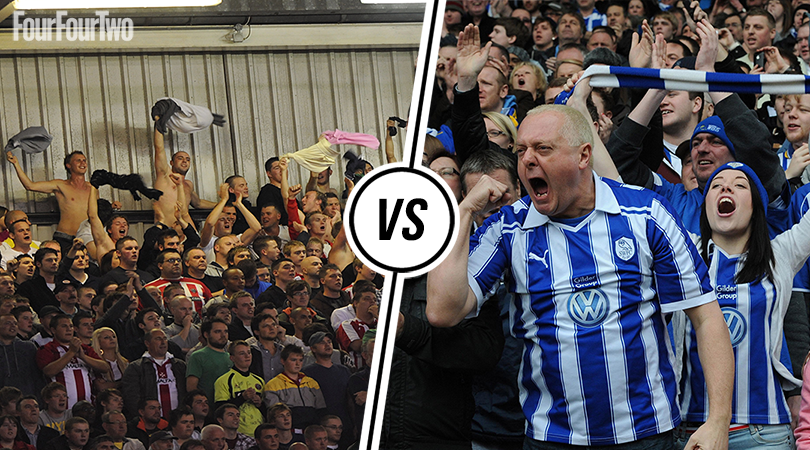
50. Sheffield United vs Sheffield Wednesday
The first derby in Sheffield took place in 1860, when Sheffield FC’s patient three-year wait for opposition was ended by Hallam. But the true Steel City Derby started in 1890, and has since been one of football’s closest encounters: United have won 49 and Wednesday 48, with 47 games drawn.
The highest-profile clash was the 1993 FA Cup Semi-Final, won 2-1 by Wednesday after extra-time at Wembley; only four of the 114 league derbies have been outside the top two divisions, with the pair renewing hostilities following United’s promotion in 2016/17.
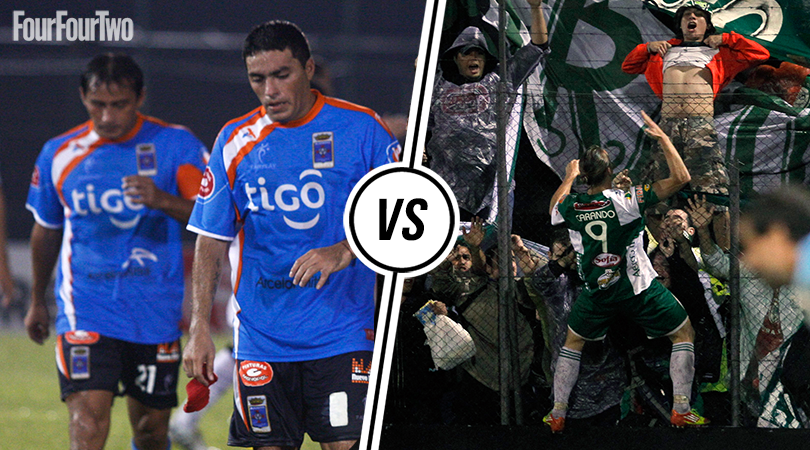
49. Blooming vs Oriente Petrolero
You can expect fireworks at the Clasico Cruceno in Bolivia’s biggest city, Santa Cruz. They may not be as successful as national powerhouses Bolivar and The Strongest, but Blooming are five-time champions, named somewhat poetically after flowering youth; rather more prosaically, four-time champions Oriente Petrolero were formed by oil workers. And they don’t half wind each other up.
In 2008, Oriente Petrolero’s Marcelo Aguirre celebrated a goal with a chicken dance, which sparked three red cards and a mass brawl. Blooming hit back a year later, when a scuffle led to Sergio Jauregui directing a flying kung-fu kick to the face of Oriente’s Leonardo Medina.
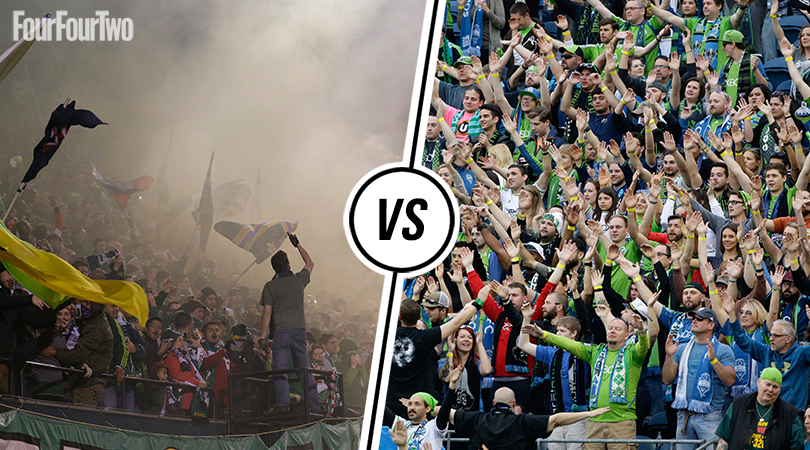
48. Portland Timbers vs Seattle Sounders
Although separated by 173 miles of Interstate 5, Portland and Seattle are virtually on each other’s doorsteps by North American standards: MLS Western Conference rivals Vancouver and Houston are 2,400 miles apart. Dating back to 1975, this Pacific Northwest spat has spanned four different leagues – from the now-defunct North American Soccer League, through the Western Soccer Alliance and United Soccer League, to MLS since 2011.
It’s the league’s biggest grudge match, and while violence is rare, the fans express their vociferous mutual dislike through songs and giant tifos. The rivalry has even extended up to local ‘dignitaries’, with Portland mayor Sam Adams and his entire staff forced to wear Sounders scarves for an entire day after losing a bet with his Seattle counterpart Mike McGinn over a game in 2011.
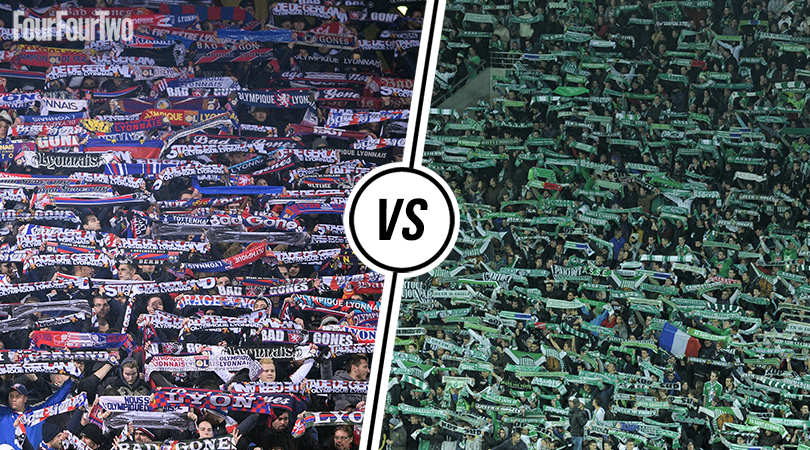
47. Lyon vs Saint-Etienne
With little regard for the Academie Française’s desires to Anglicise the language, this Rhône-Alpes rivalry is known as Le Derby. Barely 30 miles apart, the clubs first clashed in 1951 and came to represent the perceived nature of each city: Saint-Etienne as the blue-collar working-class opposite to Lyon’s white-collar admin workers.
The workers held the upper hand to start with, Saint-Etienne scooping 10 league titles between 1957 and 1981 and reaching the 1976 European Cup final, while enjoying a 7-1 victory over their neighbours in 1969. But they later sank into the doldrums and from 2002 Lyon rather reset the balance by winning seven successive Ligue 1 titles.
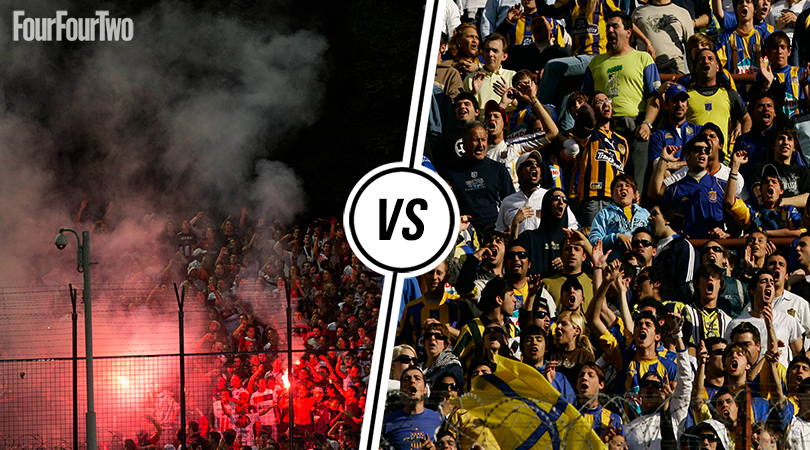
46. Newell’s Old Boys vs Rosario Central
Based in the country’s third-biggest city Rosario, both teams have famous fans: Lionel Messi represented Newell’s Old Boys before leaving for Barcelona at 14, while Che Guevara was a Rosario Central supporter before joining the Cuban Revolution.
The rivalry intensified in the 1920s, when the city was hit by a leprosy epidemic; a local hospital asked the clubs to play a fund-raiser, but Rosario Central refused. Newell’s fans branded them ‘cads’, so Rosario hit back by calling their rivals ‘the lepers’. The nickname stuck.
Relations have never been cordial. In 1974, Newell’s made a late comeback in the final match of the Metropolitano championship to beat Rosario to the title. A pitch invasion swiftly led to running battles and the match had to be suspended.
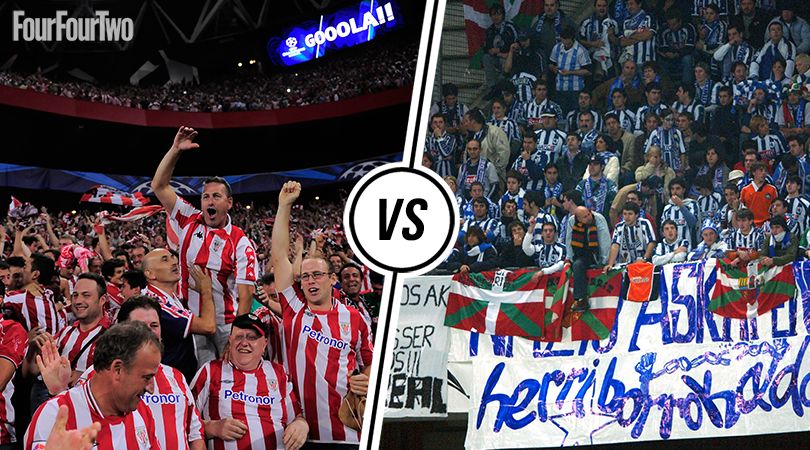
45. Athletic Bilbao vs Real Sociedad
The Basque derby – or Euskai Derbia, to the locals – is a curious thing. There are some schisms between those from the working-class port of Bilbao and the better-heeled resort of San Sebastian, while Athletic fans remain proud of their Basque-only selection policy, a principle abandoned by la Real in the late 1980s.
But much more so than most local disputes, this game has often been a unified show of solidarity against the common enemy – namely governance by Madrid. Under General Franco, regional identity was effectively criminalised; a fortnight after the dictator’s death, the two captains proudly waved the illegal Basque flag to an ecstatic derby crowd.
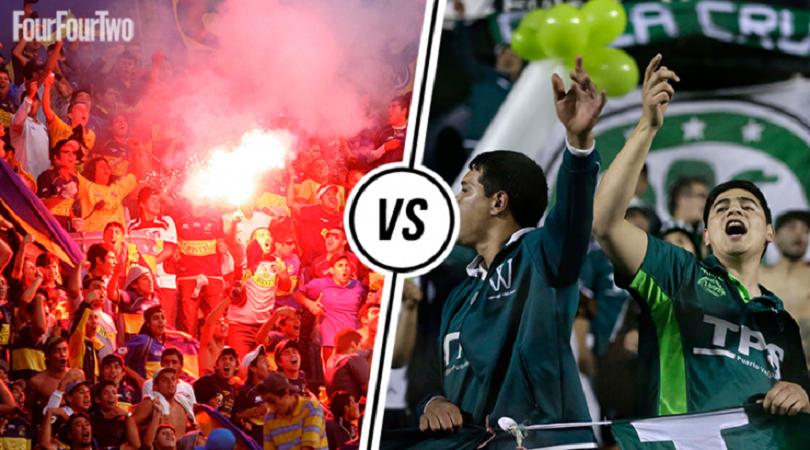
44. Everton vs Santiago Wanderers
That’ll be Everton de Vina del Mar, four-time Chilean champions but slipped into the second tier in 2014 after being relegated alongside Rangers (no, not them either). Thrice-champions Santiago Wanderers aren’t from Santiago – they’re from the gritty port city of Valparaiso, and there was another team called Valparaiso Wanderers. Vina del Mar is a richer, more tourist-friendly city five miles up the coast; the rivalry is known as the Clasico Porteno – the Seaport Derby.
Everton fans like to recall a rather one-sided Copa Carlos Varela match in 1950, which they won 17-0 at their pleasingly named Estadio Sausalito. Santiago Wanderers refuse to acknowledge what they insist was a preparatory fixture featuring youth players, noting that they didn’t even start with 11.
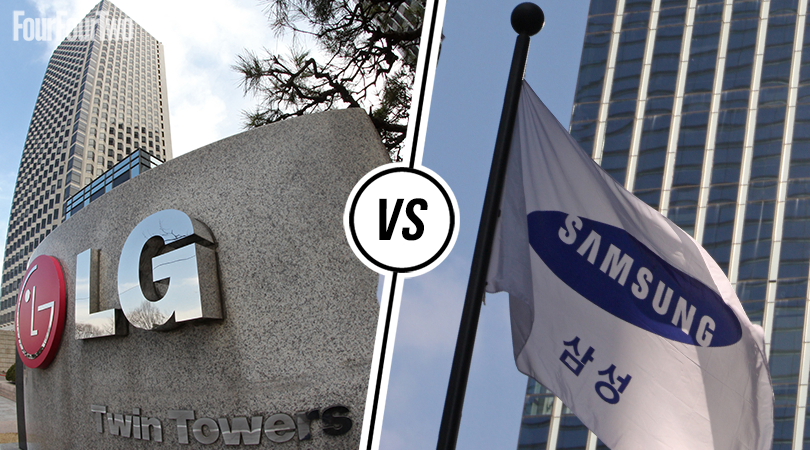
43. FC Seoul vs Suwon Bluewings
It’s indicative of Korea’s consumer-electronics clout that this is partly a clash between two of the world’s largest brands: LG and Samsung own FC Seoul and Bluewings respectively. But it’s a bit more complicated than that. Under the K League’s decentralisation policy, in 1996 the club then known as LG Cheetahs were relocated from Seoul to Anyang, a satellite city 12 miles south of the capital and a mere couple of miles from Bluewings’ Suwon home.
Eight years later, fans united in vain against LG forcing a move back to the capital’s vacant World Cup stadium, along with a name change to FC Seoul. Bluewings supporters were outraged and refused to acknowledge the new entity, but the success of the two clubs means that the ‘Super Match’ is now Korea’s key fixture.
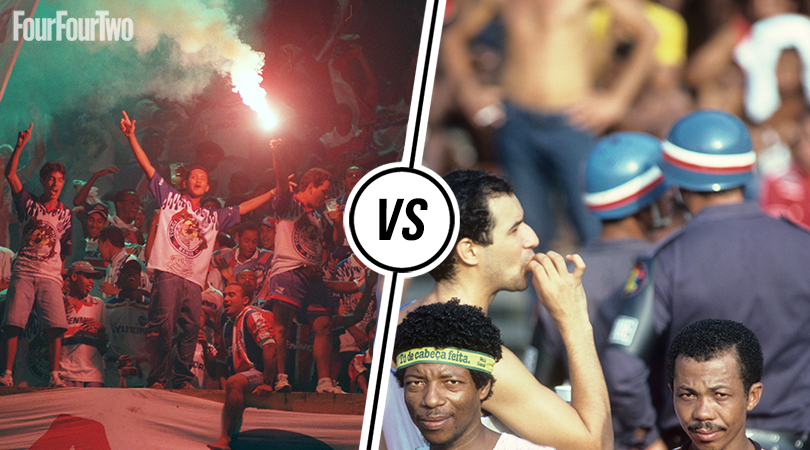
42. Bahia vs Vitoria
The Brazilian coastal city of Salvador was a landing point for the slave trade; 80% of the population are of African descent, and the mixing of Catholic and African beliefs created macumba, a local version of voodoo. Early Bahia and Vitoria stars make offerings to African gods in an attempt to secure victory, although as coach Nenem Prancha pointed out: “If macumba had the power to win matches, it would be a draw.”
In a mid-1990s derby, Vitoria midfielder Preto chose a rather blunter approach, provoking Bahia’s Parreira by hinting he’d slept with his opponent’s wife. It worked: a retaliating Parreira was sent off and moaned to the media about what Preto had said. He later broke into the Vitoria man’s apartment after another derby game, pointing a gun at his head and making him promise that the alleged adultery had never happened.
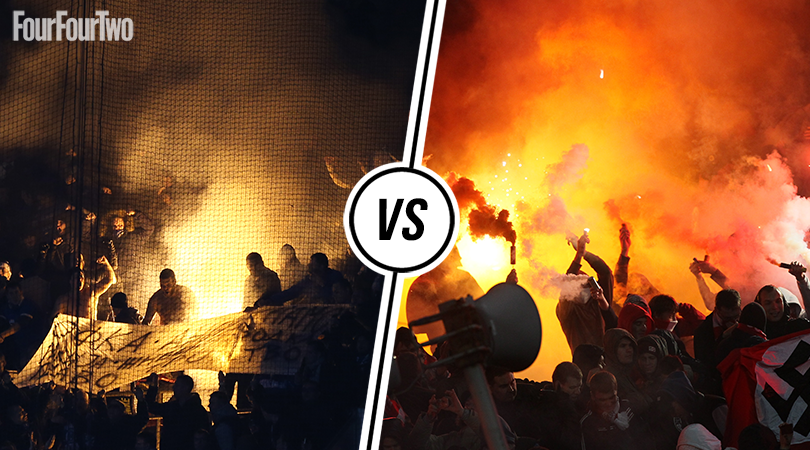
41. Dynamo Moscow vs Spartak Moscow
Moscow’s a big place, but with all due respect to CSKA, Lokomotiv and Torpedo, the biggest and oldest derby is between Dynamo and Spartak. It’s also the oldest remaining Muscovite derby – and there is, you may not be astonished to learn, a political side to it.
Formed by trade unionists in 1922, the club that became Spartak quickly gained a rival in Dynamo, who reformed a year later. Spartak leaned heavily on the four brilliant Starostin brothers – who in 1942 were arrested on suspicion of an assassination plot against Joseph Stalin; it just so happened that secret police chief Lavrentiy Beria was a Dynamo patron.
When Nikolai Starostin returned from the Siberian camps to become chairman of Spartak, he took particular personal interest in making sure the players were up for games against Dynamo.
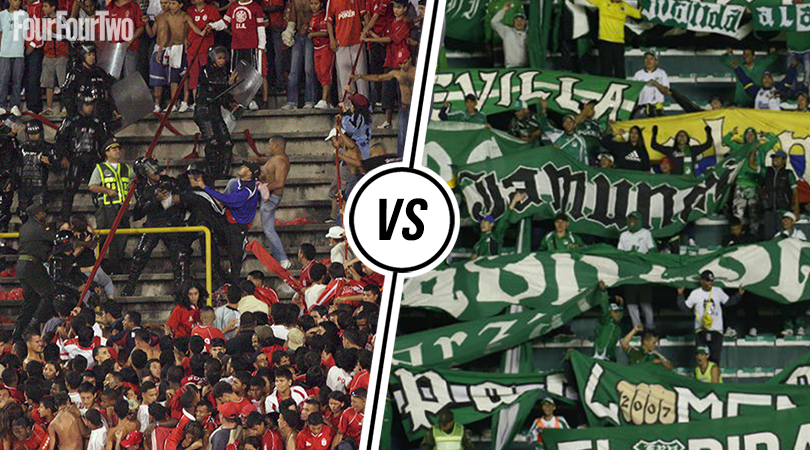
40. America vs Deportivo Cali
If you want to win a Copa Libertadores final, don’t come from the south-western Colombian city of Cali. Deportivo have lost both their finals, while neighbours America are South America’s footballing bridesmaids, losing all four of their finals – three in consecutive years from 1985 to 1987, the last in the final 10 seconds. Ouch.
The pair met in a 1931 cup final, Deportivo triumphing 1-0 after America had two goals disallowed. Los Diablos Rojos protested at the result, hitting back with… angry leaflets, circulated in the area. Somehow that angered Cali’s football authorities to such an extent that they gave the club a one-year suspension from local competitions.
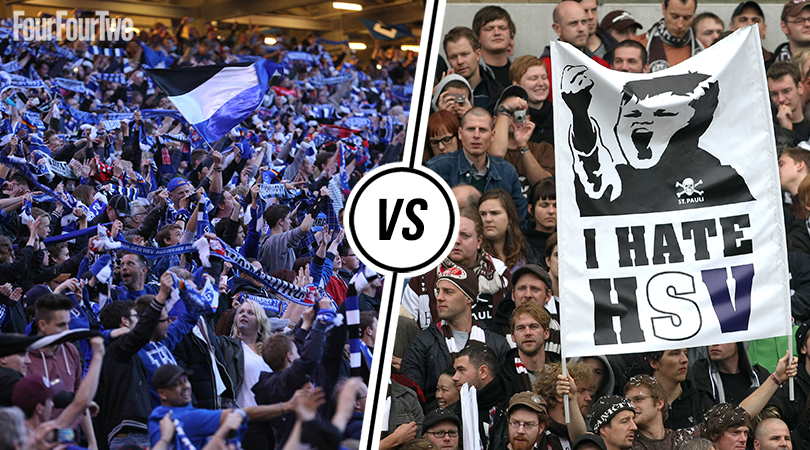
39. Hamburg vs St. Pauli
A bit of a weird one, this rivalry. Or rather, St. Pauli is a bit of a weird club, leaving Hamburg as the straight man to its kooky oddness. Either way, this is rated by German police as the most violent derby in German football.
HSV are undoubtedly the bigger club – six national titles, five European finals and by far the better record in this derby – while St. Pauli became the original hipsters’ favorites, embracing rock music and the red-light district while cracking down on the nationalistic hooliganism that was blighting other German teams in the 1980s.
Although the sides haven’t always been on a level playing field, St. Pauli’s 1947 win in the Hamburg championship established an enmity that exists to this day. In 2011, HSV reseeded its pitch four days before the derby, which was subsequently postponed after torrential rain: cue mickey-taking from St. Pauli and an attack by HSV hooligans on a rival pub.
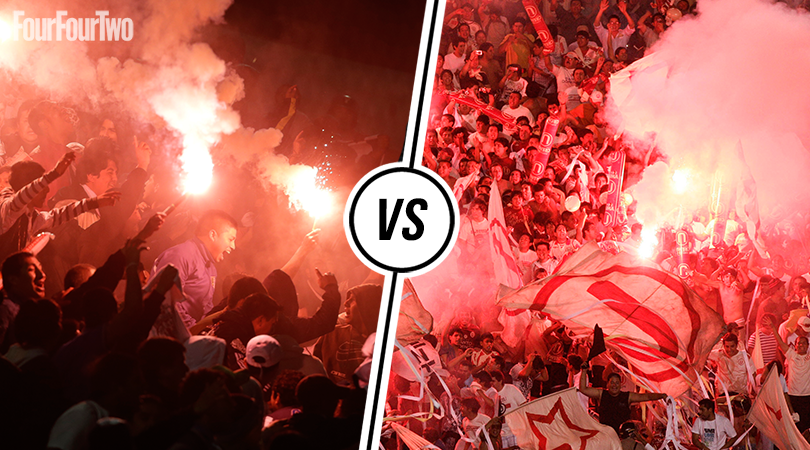
38. Alianza Lima vs Universitario
Meet the two most successful clubs in Peru. Formed in 1901 by workers from the local horse stud, Alianza have been champions 26 times, four more than Lima neighbours Universitario (founded, as the name suggests, by students and professors at the National University of San Marcos, in 1924).
The first Clasico in 1928 rather set the tone. Plucky upstarts Universitario went ahead, and established giant Alianza didn’t take it well, losing five players to red cards before the game was called off. Alianza supporters tried to storm the section housing Universitario fans, who responded by throwing canes, earning the match the moniker El Clasico de los Bastonazos (batons).
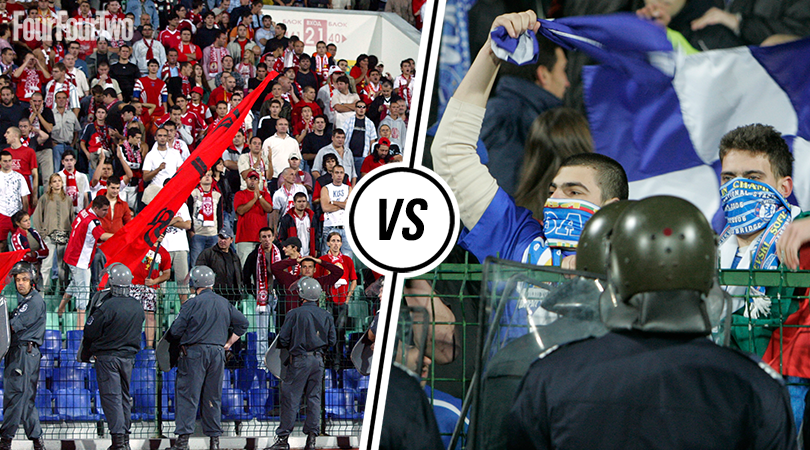
37. CSKA Sofia vs Levski Sofia
Contrary to its name, the Eternal Derby started later than most: although they have roots in an older army team, CSKA were only founded in 1948. Perhaps realizing they were late to the party, the new outfit promptly set about dominating Bulgarian football (winning eight top-flight titles in the 1950s), but not without a fierce fight from older club Levski.
The sides reached Peak Derby during the 1985 Bulgarian Cup final. In a game including a handled goal, two iffy penalties and two red cards, some of referee Asparuh Yasenov’s decisions were perhaps questionable. CSKA won 2-1 but upon the final whistle, the ongoing scuffles morphed into a full-sized tear-up which lasted several minutes despite the attempted intervention of the police.
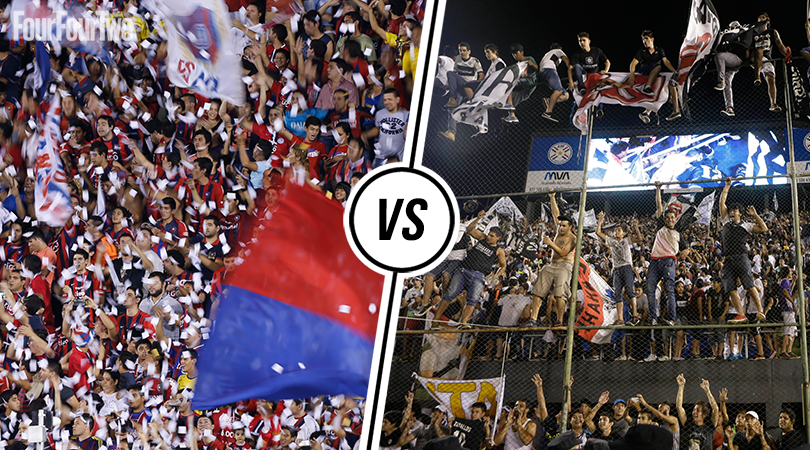
36. Cerro Porteno vs Olimpia
Nine out of 10 Paraguayan football fans support one or other of these teams from the capital, Asuncion. Olimpia was Paraguay’s first club, founded in 1902 by Dutchman William Paats and named after the Greek city of Olympia, and was originally associated with the elite. Cerro Porteno are named after a battlefield where the Paraguayans repelled the massed forces of Argentina in 1811, although that hasn’t stopped the club appointing several Argentine managers, including Tata Martino and Ossie Ardiles.
The first derby ended in farce when Olimpia didn’t turn up, and in 1969 Cerro Porteno’s Miguel Angel Sosa angered rival fans with some barefaced cheek, rounding the keeper and sitting on the ball before rolling it home.
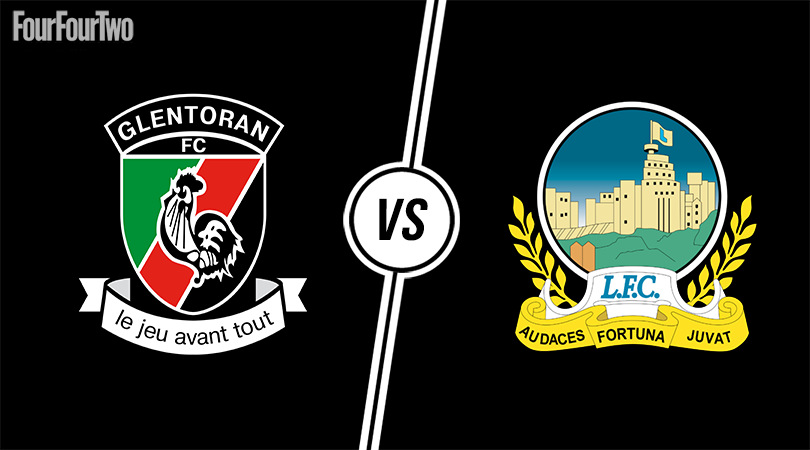
35. Glentoran vs Linfield
Although Linfield’s Windsor Park is in a Protestant area and some games have been marred by religious bigotry among some supporters, this isn’t a simple sectarian clash. Both sides are predominantly Protestant-supported, and despite accusations that Linfield secretly banned Catholics, each side has fielded players from various religious backgrounds.
In truth, the rivalry is more about success – Linfield have 53 league titles to Glentoran’s 23, with no other current club on more than seven – and geography, with Linfield in Country Antrim to the south of Belfast and Glentoran in County Down to the east. Competing since 1887, they traditionally meet on Boxing Day – unless the league bans it for fear of violence.
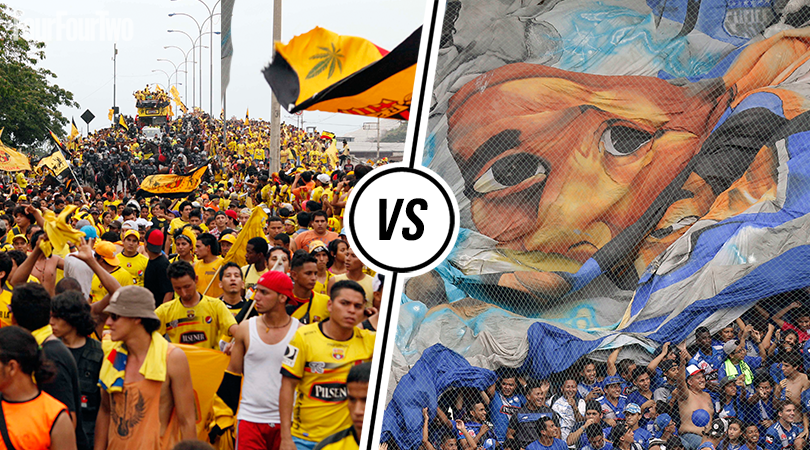
34. Barcelona vs Emelec
Barcelona have won more Serie A titles than Roma, Lazio or Napoli. That’s the Ecuadorian Serie A and the ‘other’ Barcelona, formed by a Spaniard in 1925 and now Ecuador’s most successful football club – although Emelec is only marginally behind it in terms of success, having claimed 14 league titles to Barcelona’s 15.
Both are from Guayaquil, Ecuador’s main port city, which has a much higher population than capital Quito. Emelec play in a ground named after its founder, the American owner of the Monopoly-esque Ecuador Electric Company (i.e. Empresa Electrica del Ecuador, or ‘Emelec’ for short). So, naturally, their home is called El Estadio George Capwell. Catchy!
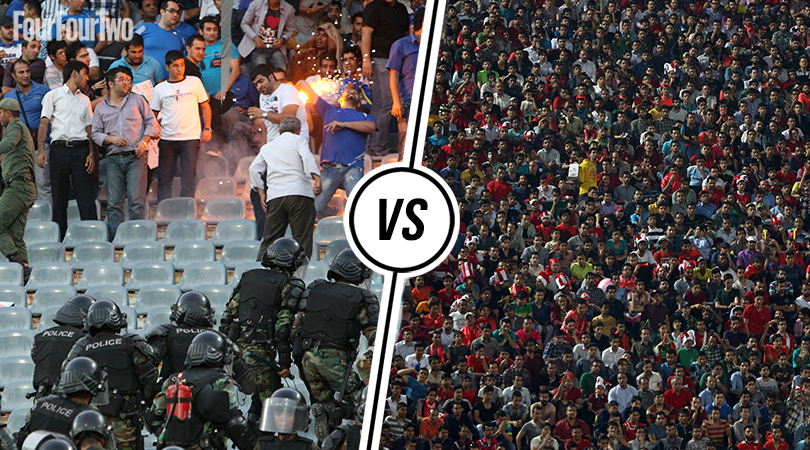
33. Esteghlal vs Persepolis
If you don’t think a game’s worth mentioning unless there are 50,000 people in the ground, you’ll love the Tehran derby. Iran’s two most successful teams both use the huge Azadi Stadium, and it’s usually packed to its 95,000 capacity for this clash. During the ‘70s the rivalry became class-conscious, with Persepolis as the people’s club while Esteghlal – known as Taj until the 1979 Revolution – were seen as being supported by the elite.
In a noteworthy 1995 scrap, Persepolis were 2-0 up and sailing with 10 minutes left but a controversial penalty helped Esteghlal draw level. Such were the accusations of favouritism that the FA started to import foreign referees for improved impartiality – but it didn’t stop a 2000 brawl when needle between Esteghlal goalkeeper Parviz Broumand and Persepolis striker Payan Rafat led to the keeper whacking the forward in the face.
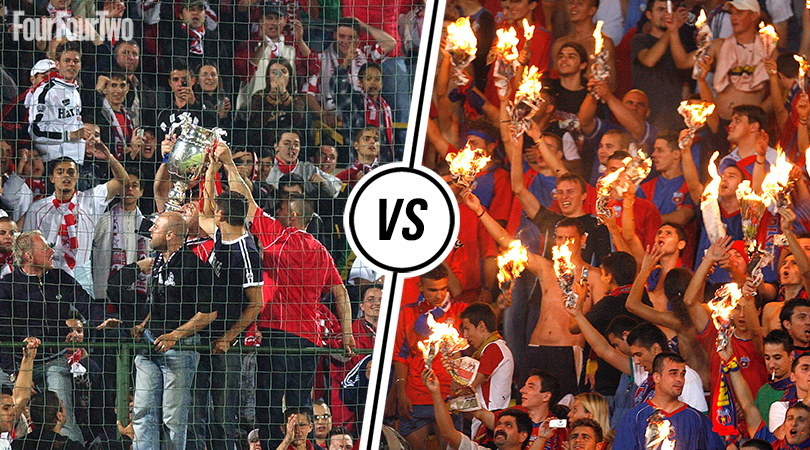
32. Dinamo Bucharest vs FCSB
In the five seasons between 2007 and 2012, a curious thing happened: neither Dinamo Bucharest nor Steaua Bucharest - now officially known as FCSB after a dispute with the army - won the league title, the first such five-year drought since the teams were both formed during the post-war Communist reconstruction of Romania. Steaua roared back to prominence, winning three titles in five years, taking them to 26 to Dinamo’s 18.
The clubs dominated the Communist era; with a ban on players under the age of 28 from moving abroad, each club could build a strong team with help from the state. Backed by the secret police, Dinamo reached the 1984 European Cup semis; two years later, Army club Steaua, with dictator Nicolae Ceaucescu’s son Valentin as general manager, were champions of Europe.
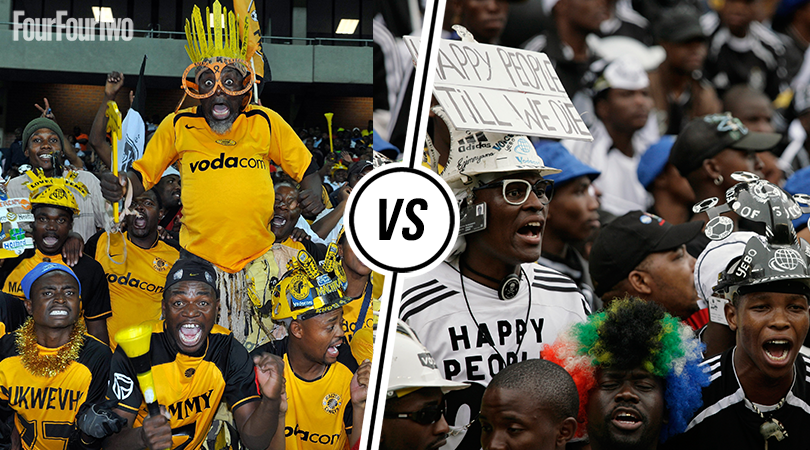
31. Kaizer Chiefs vs Orlando Pirates
Soweto’s population is around 1.2m, but something like 30m people follow its two biggest clubs. Formed in 1937 and named in honour of an Errol Flynn film, Orlando Pirates are one of Africa’s oldest clubs. Local lad Kaizer Motuang represented them for eight years before moving to the NASL’s Atlanta Chiefs; returning to find the Pirates in-fighting and four of his old team-mates expelled, he promptly set up the team that became Kaizer Chiefs.
The first derby was in 1970 and the clubs have been close rivals ever since, fighting not just for local superiority but national supremacy. Since the 1996 founding of the Premier Soccer League they have won four titles each, and although billionaire-backed Pretorian club Mamelodi Sundowns have won nine, the two Soweto teams are easily the most popular clubs in southern Africa.
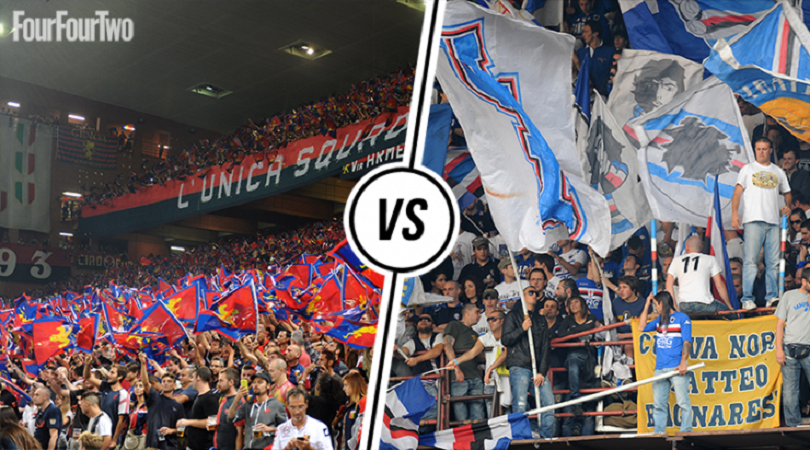
30. Genoa vs Sampdoria
The Derby della Lanterna (Lighthouse Derby) is named after the Torre della Lanterna, the lighthouse which for almost a thousand years has protected the port city the Italians call Genova. Genoa Cricket and Football Club aren’t quite as old, although their founding in 1893 makes them Italy’s oldest team.
By contrast Sampdoria are Italian pro football’s youngest club, formed in 1946 from the merger of the defiantly blue-collar Sampierdarenese and Andrea Doria, and immediately moving in with the neighbours at the Stadio Luigi Ferraris, which the clubs have shared ever since and which was remodelled for Italia '90. But some say the parochial enmity dates back to before Christ, citing the Second Punic War of 218-201BC in which those to the west (Samp’s heartland) sided with Carthage, while those to the east (usually Genoa-supporting) fought for Rome.
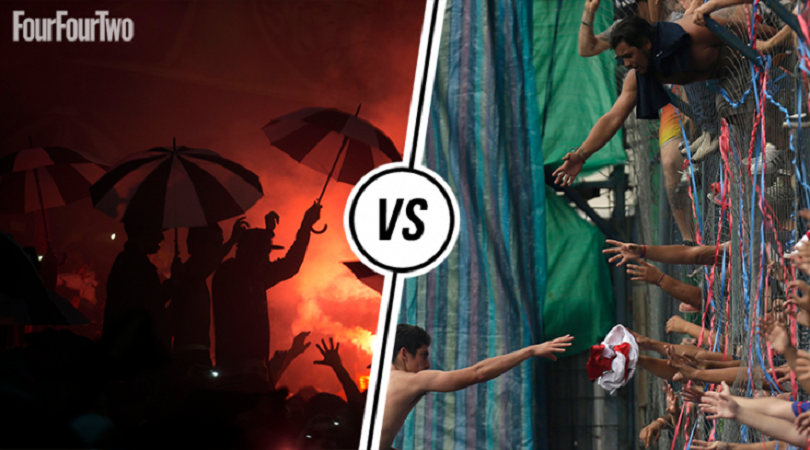
29. Colo-Colo vs Universidad de Chile
Chilean capital Santiago is home to the country’s two football giants. Universidad are known as El Chuncho – ‘the Owl’ – and, yes, started out as a university side. Colo-Colo, founded in 1925, are modestly nicknamed El Popular, or ‘the Popular One’ (inevitably soon to be a Premier League manager’s nickname).
They were named after a tribal chief from the 16th-century Chilean war of independence and have links to another leader – infamous dictator Augusto Pinochet, who was honorary club president until startlingly recently; there’s a longstanding controversy over whether he donated money for the completion of Colo-Colo’s Monumental home, which Universidad fans call “Pinochet Stadium”.
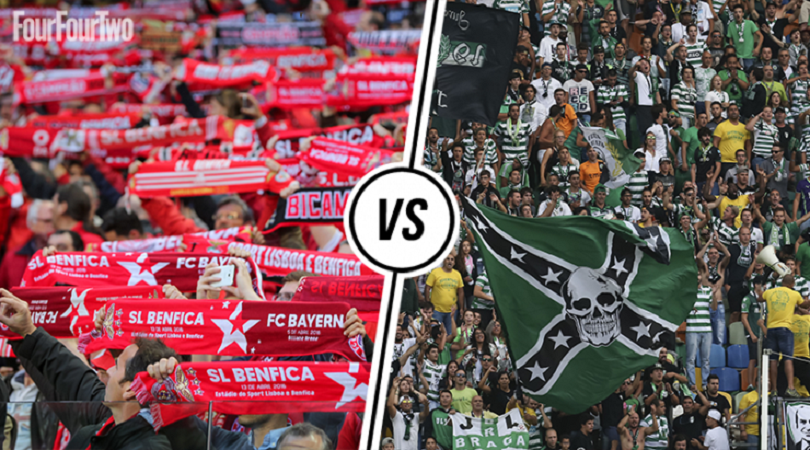
28. Benfica vs Sporting
Formed in 1904 by students, Sport Lisboa e Benfica were a hand-to-mouth operation typified five decades later by the fans clubbing together to build the Stadium of Light. Sporting Clube de Portugal, founded in 1906, were bankrolled from the start by the grandfather of their founder (Jose Alvalade, after whom the stadium is named), who happened to be a viscount.
Before the first derby in 1907 Sporting lured eight players from their rivals with the promise of better facilities, rubbing it in by sending them out for the second half in fresh kit; four years later, Sporting players refused to welcome the “scruffy” Benfica team to their stadium. Even so, the Eagles have often had the upper hand, reaching seven European Cup finals and winning two.
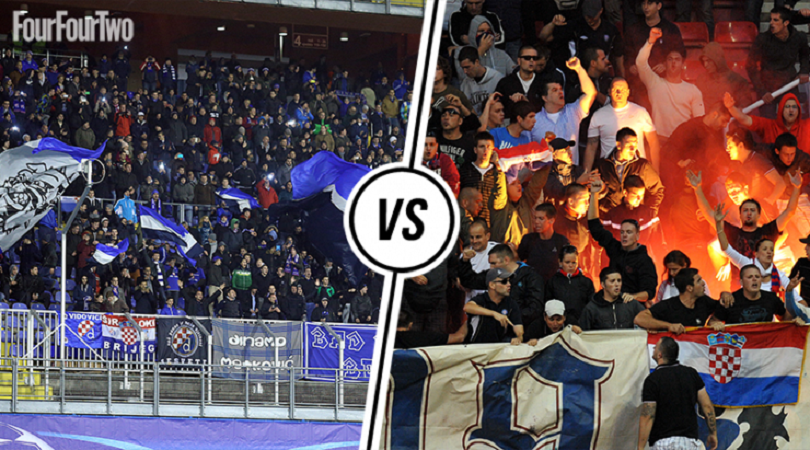
27. Hajduk Split vs Dinamo Zagreb
Allow FFT a small digression from the rules: Split to Zagreb is 250 miles by road and Croatia is only about 300 miles from top to bottom, so it might be argued that this isn’t a derby. The Croats disagree, calling it the Vjecni Derbi (which means ‘Eternal Derby’).
Dinamo and Hajduk are Croatia’s biggest clubs, representing very different and often fiercely oppositional cities: as is usually the way, those from the capital (Zagreb) are regarded as haughtily superior, while they in turn mock the ‘lazy provincials’. Dinamo’s on-pitch superiority has gone unquestioned lately, but we don’t suggest you say that at Hajduk’s Poljud Stadium when their rivals come to town.
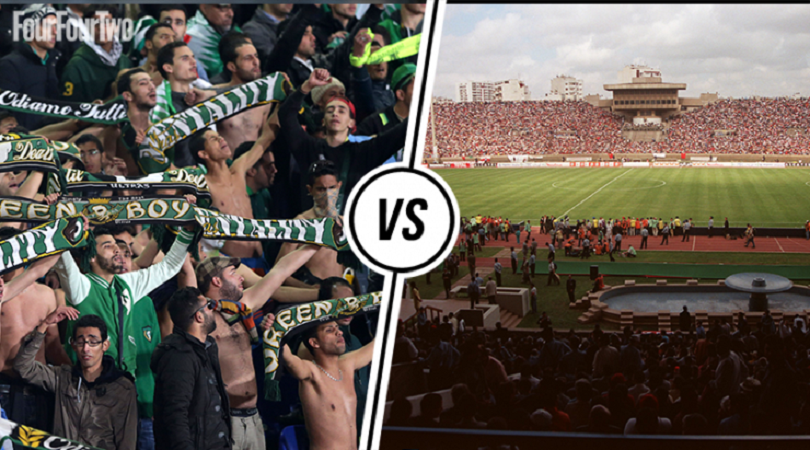
26. Raja vs Wydad
The Casablanca derby is both hyperlocal – the two clubs both occupy the 67,000-capacity Stade Mohammed V – and internationally geopolitical. Raja were founded in 1949 by nationalists aiming to rally working-class youth against the ruling French, maintaining an all-Moroccan lineup and quickly becoming regarded as The People’s Club. A decade older, Wydad were quickly cast as the elitist establishment outfit, although that tag has receded in the 60 years since the French left Morocco.
The country’s most successful teams, they have both been champions of Africa – most recently Wydad in 2017. Derbies in the last few years have been fractious and sometimes lethal: a fan’s death in 2007 prompted a behind-closed-doors ban, but in 2010 more than a hundred were arrested after a post-match riot.
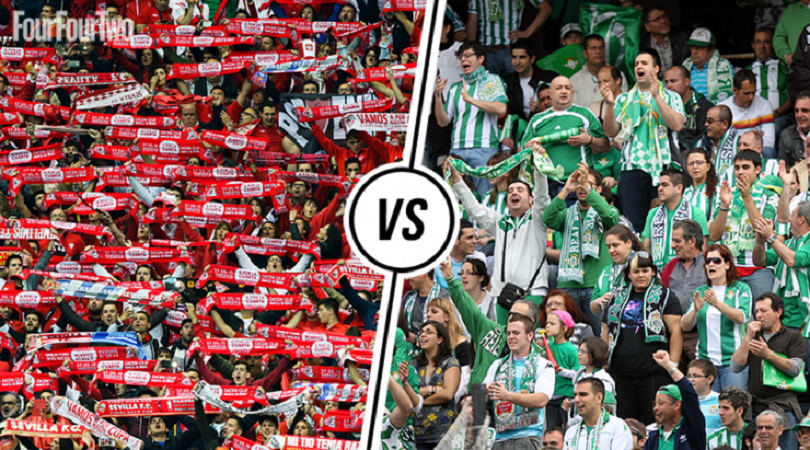
25. Real Betis vs Sevilla
Subtropical Seville is one of Europe’s hottest cities and its rivalry can get a little heated, too. It started as a class thing. Sevilla Football Club was founded in 1905, partly by Brits working white-collar jobs for the Riotinto mining company; when one director refused to hire a worker as a player, Real Betis Balompie were formed in 1909.
Although no longer defined and divided by the class shibboleth, the clubs remain defiantly different. Sevilla have had more success parochially (winning more derbies), domestically (six national trophies to Betis’s three) and continentally (they have been particularly impressive in recent European campaigns), while Betis have retained the rootsier support but have bobbed between the top two divisions.
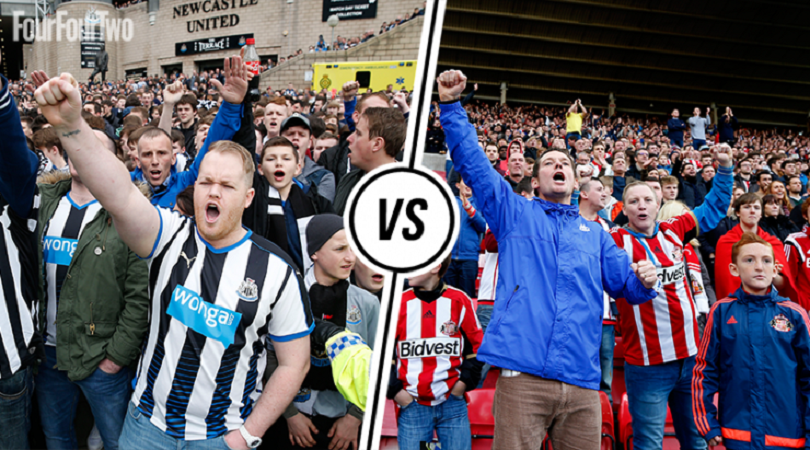
24. Newcastle United vs Sunderland
Long favoured by regally granted coal export rights, Newcastle was Royalist – while overlooked Sunderland went Parliamentarian; in the inevitable battle, King Charles’ troops were defeated and Newcastle subjugated. A century later they were again riven by constitutional conflagration during the Jacobite rebellion (supported by Sunderland, resisted by Newcastle loyalists). And by 1883, they had the first derby.
The footballing rivalry has veered from the banal to the barbaric. Some fans boycott bacon (because it’s red-and-white) or Sugar Puffs (because Kevin Keegan advertised it), while others make the mutual hatred known more viscerally – and not just by the infamous 2013 punching of a police horse.
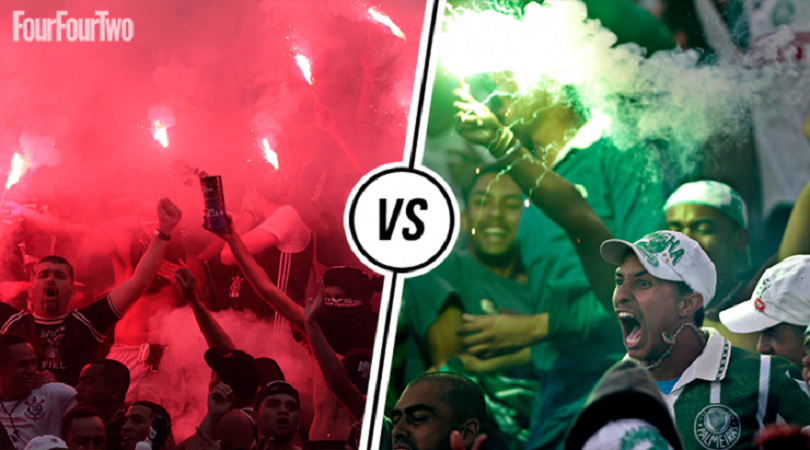
23. Corinthians vs Palmeiras
Sao Paulo is South America’s largest city, and the Paulista derby one of the continent’s fiercest contests. Corinthians are the self-styled people’s club: founded in 1910 by factory workers inspired by the visiting English amateurs Corinthian FC, they attracted a large working-class fanbase identifying with the club’s struggles (they took 80 years to win the national title and over 100 to get a suitable stadium).
Palmeiras were formed (as Palestra Italia) in 1914 by some Corinthians members of Italian descent, who had been inspired by the touring Torino and Pro Vercelli teams. This ‘betrayal’ still rankles a century later: during running battles before a game in April 2016, a bystander was shot dead.
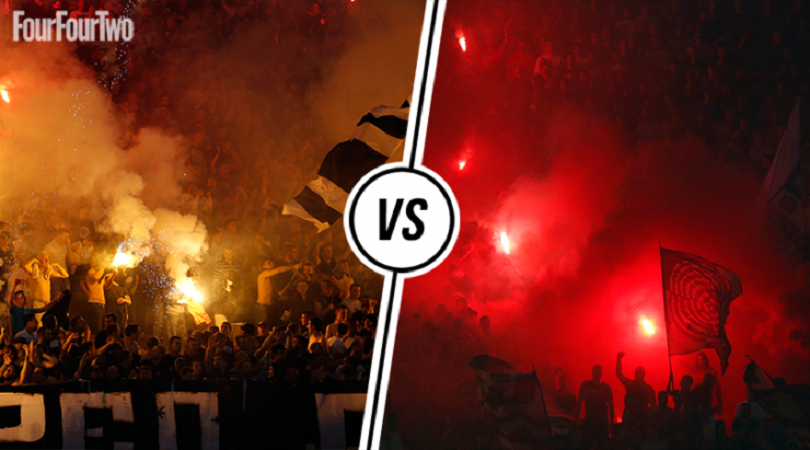
22. Partizan Belgrade vs Red Star Belgrade
Talk about dominant. In 26 of the 27 seasons since the break-up of the former Yugoslavia, either Partizan or Crvena Zvevda (to give them their official name) have won the Serbian league. As you might expect from this complicated corner of Europe, the rivalry is older, deeper and more complex than that. The clubs were formed in the immediate postwar reconstruction of Yugoslavia: Red Star by the League of Communists, Partizan by Army officers.
As was often the way in Eastern Bloc countries, they became pawns in the power struggle between agencies of state – but even under the pervasive power of an enforcedly communal ideology, parochial squabbles and ethnic hatred would bubble to the surface. When the war ended, Belgrade’s big two – separated by just 400 metres of streets and parkland – were able to get back to their mutual loathing.
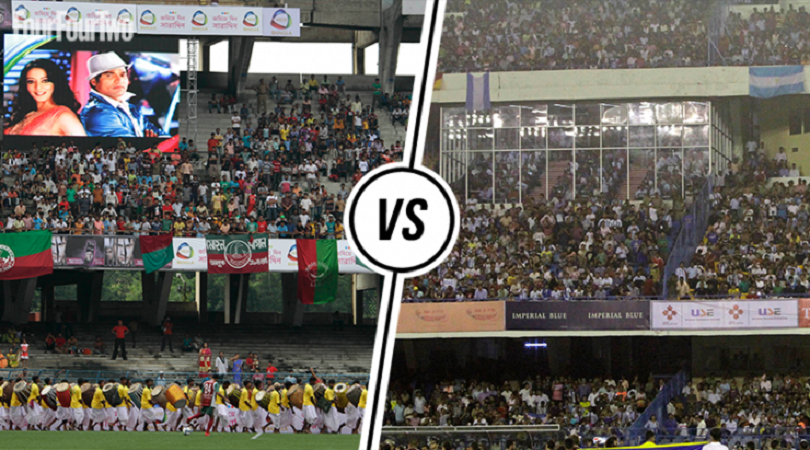
21. East Bengal vs Mohun Bagan
It’s big news when these two colossi of Kolkata collide. They share the 100,000-capacity Salt Lake Stadium and the derby can fill it; the record attendance, in 1997, was 131,000. And it’s all because a player didn’t get picked once. When local club Jora Bagan decided to exclude their half-back Sailesh Bose for a game in 1920, it annoyed the club’s vice-president – a rich industrialist called Suresh Chandra Chaudhuri – so much that he set up a new outfit.
He and his co-founders called it East Bengal, after the nearby region they hailed from – essentially the modern-day Bangladesh. This led to something of a social schism between the clubs. The upstarts East Bengal became identified with immigrants and soon separatism, pitted against Mohun Bagan – India’s oldest club, established in 1889.
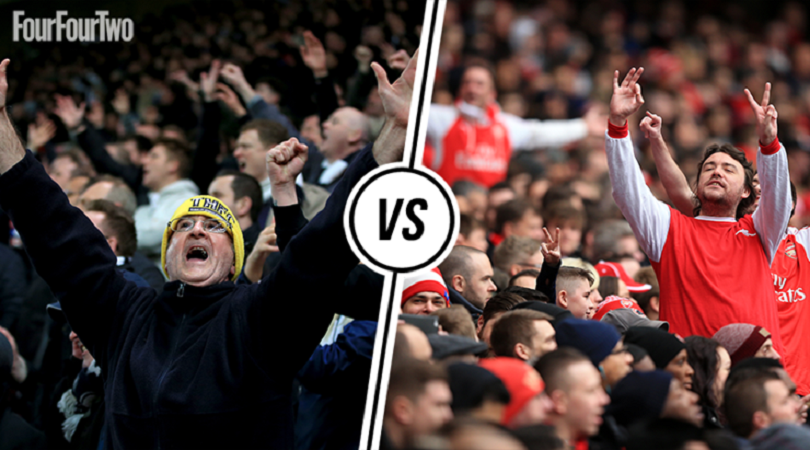
20. Arsenal vs Tottenham
Compared to some derbies, this doesn’t really matter. It rarely decides a title, and they’re not even that close: the four-mile gap means that the Emirates is closer to Waterloo than to White Hart Lane (with apologies to non-Londoners for that metropolitan reference). And Chelsea’s recent accretion of domestic and continental silverware means that neither can confidently claim to be the capital’s best club.
And yet it obviously matters a great deal. It’s London’s highest-profile derby, between two teams with millions of fans around the world. Since 1950 they’ve only been apart for one campaign and familiarity has bred contempt, especially as the Premier League stakes have grown so high – and, arguably, as the support base has become less parochial and more geographically diverse.
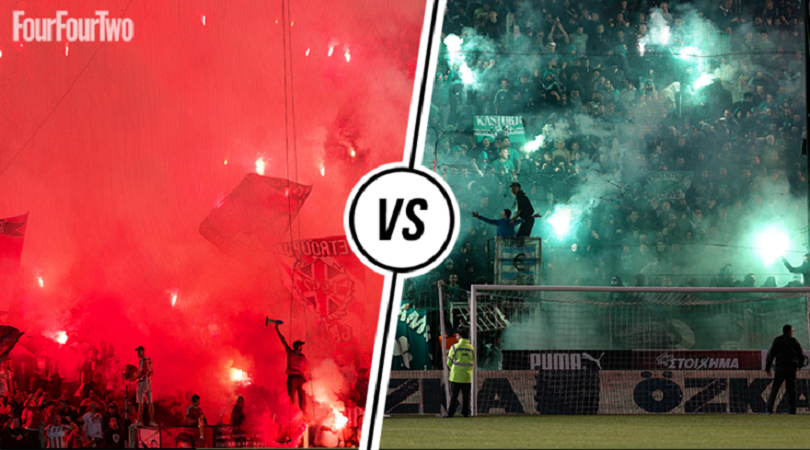
19. Olympiacos vs Panathinaikos
Two and a half millennia ago, the cities of Athens and Piraeus were linked by eight miles of siege-resistant walls. Now their teams are united in mutual loathing by a fixture known as the Derby of the Eternal Enemies or indeed the Mother of All Battles. One of Greece’s oldest clubs, Panathinaikos originally represented Athens’ high society; Olympiacos, by contrast, gathered their fans from the working port city of Piraeus.
The two are Greece’s dominant sides, winning 64 of the 83 national league titles; there have been no other champions since 1994. Olympiacos have the upper hand with 44 titles to 20, including 19 of the last 23. This inequality doesn’t seem to have had a soothing effect on the derby, which now features no away fans but plenty of riot police, fireworks and tear gas.
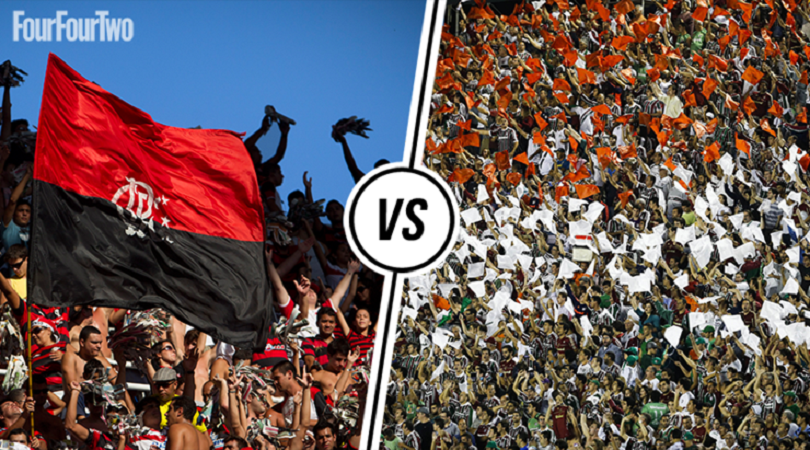
18. Flamengo vs Fluminense
Any football bucket list should feature Fla-Flu in the Maracana. Rio de Janeiro’s two most successful clubs draw a big crowd, although perhaps not quite the 194,000 said to have packed into Brazil’s most iconic stadium in 1963, setting a world record for a club fixture.
Fluminense were formed in 1902 by aristocratic youngsters who’d seen this foot-ball thing while studying in Europe. Flamengo were primarily a rowing club until 1911, when some members who also played football for Fluminense decided to form their own team; at the first derby in 1912, nine of Flu’s line-up were facing their old colleagues.
During an absurd title-deciding 1941 fixture, Fluminense tried to protect a lead by hoofing clearances into a nearby lagoon, but Flamengo’s rowers paddled out to retrieve them.

17. FK Velez vs HSK Zrinjski
You didn’t expect that, did you? But the Mostar derby is one of the world’s most fascinating and tempestuous clashes. Now in Bosnia and Herzegovina, Mostar is split geographically by the Neretva River – and that fluvial schism (plus a war or two) has helped to create an ethno-cultural partition between the primarily Catholic Croat west bank and the predominantly Bosniak Muslim east bank.
Named after a Croatian aristocrat who died defending his country from the Ottomans, Zrinjski have long been identified with Croat nationalism; Velez were formed by a mixed-ethnic bunch of Communist anti-monarchists. Zrinjski remain a totem of Croatian identity, but Velez is more complicated: still left-leaning (their fans carry images of Che Guevara and Marshal Tito), the club’s support is now mostly Muslim.
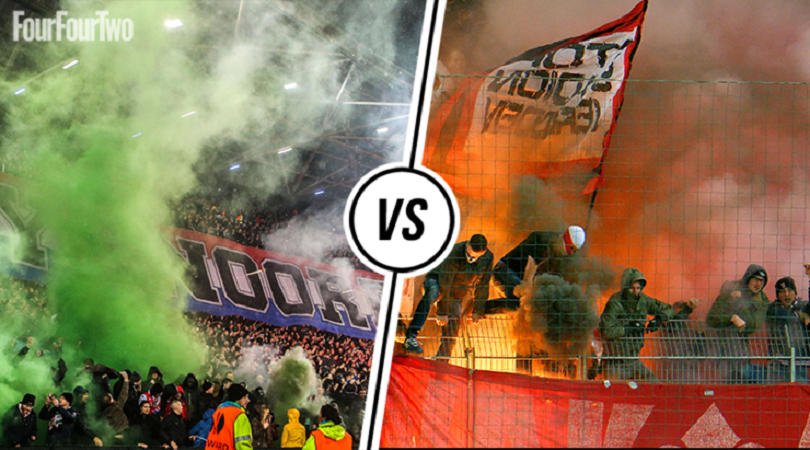
16. Ajax vs Feyenoord
Since its inception in 1921, De Klassieker has become a clash of two Dutch cultures. Ajax represent Amsterdam: classical, artsy and liberal. Feyenoord are Rotterdam: industrial, largely rebuilt since being flattened in World War Two, and increasingly right-wing – controversial politician Pim Fortuyn founded his anti-immigration party in the city. Ajax’s glamour contrasts with the gritty populism of Feyenoord, whose De Kuip stadium has the better atmosphere.
The rivalry reached new levels in the early 1970s as Dutch football dominated Europe: Feyenoord won the 1970 European Cup but Ajax won the next three and cemented a Rotterdam-reviled reputation for graceful football. So imagine the shock when in 1983, after a 36-year-old Johan Cruyff led Ajax to the double but wasn’t offered a new contract, he jumped the divide and joined Feyenoord.
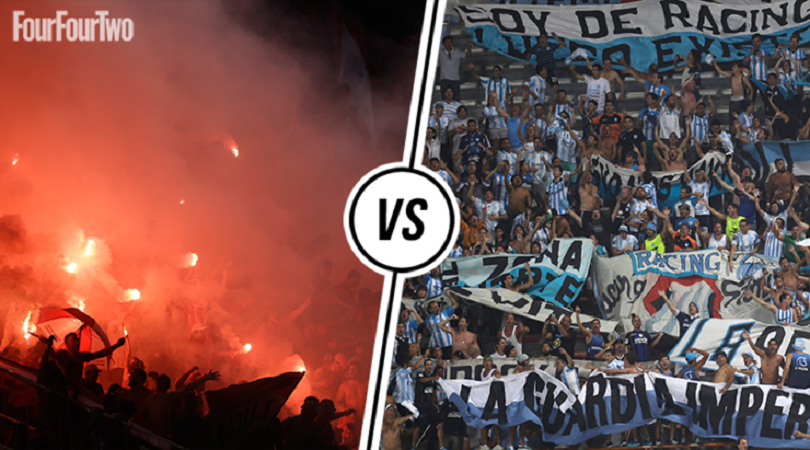
15. Independiente vs Racing Club
A pair of powerhouses, surpassed for Argentine titles only by River Plate and Boca Juniors. Racing Club have won the league 18 times and were the first Argentine team to be crowned world champions, when they beat Celtic in the 1967 Intercontinental Cup. Independiente, 16-time champions, have won more Copa Libertadores titles (seven) than any other club.
In a Latin version of the Dundee derby, they’re just 300 metres from each other in the working-class suburb of Avellaneda, on the outskirts of the Buenos Aires metropolitan area. Fighting broke out during a 1-1 draw in 1961, and the referee had to temporarily suspend the game as he dished out eight red cards – four for each side. A meeting in 2006 didn’t go smoothly either, away fans reacting to hosts Independiente taking a 2-0 lead by rioting and attacking police, who in turn responded with tear gas.
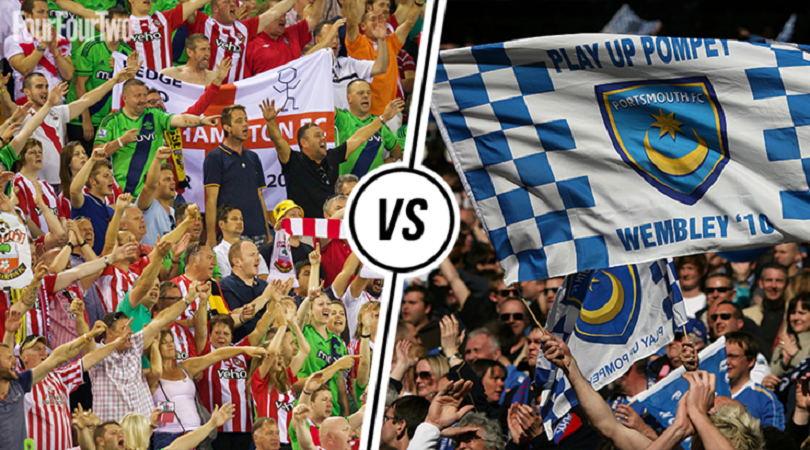
14. Portsmouth vs Southampton
Sometimes, derbies in relatively isolated places create enemies of convenience: “You’re nearest, you’ll do.” Not so with Pompey-Saints, where the discord runs deep. The neighbouring port cities relish their differences: Portsmouth vs Southampton has come to mean Royal Navy vs merchant navy, the military against the market. Although it’s often unnoticed compared to the Isle of Wight, Pompey is itself an island, and many Pomponians consider it separate from the rest of Hampshire (dominated by Southampton). The social differences have been exacerbated by contrasting economic situations.
Fluctuating fortunes on the field have produced asynchronous relegations and promotions, giving the derby a rarity value (there have been only 70 meetings in “first-class” football) that has only strengthened the mutual contempt.
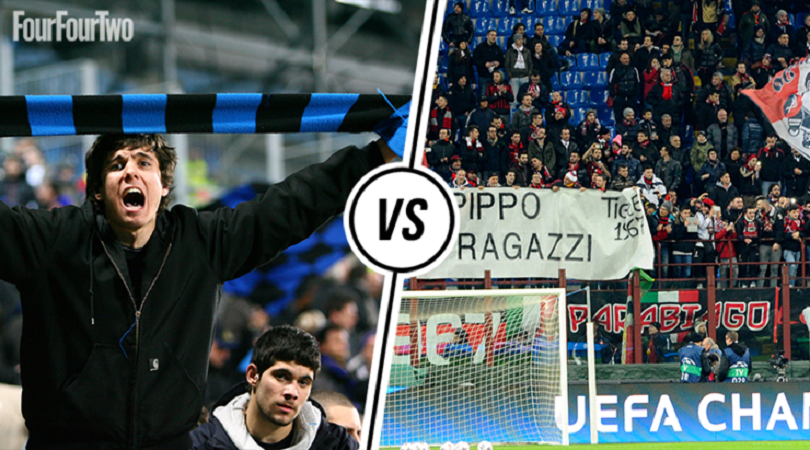
13. AC Milan vs Inter
One of football’s most famous derbies isn’t quite what it seems. Coexisting relatively peacefully (usually), the fanbases aren’t particularly split by geography, class, politics or religion – although it wasn’t always thus.
Milan were founded as the Milan Cricket and Football Club in 1899, but nine years later came a split when some members wanted to sign foreign players – hence Internazionale Milano. Perhaps fittingly, the first Derby della Madonnina wasn’t even in Italy – it was in Switzerland.
Although the two sets of fans are usually cordial rivals, trouble has flared on occasion. After a fan died in 1983 the ultras made a pact to calm the violence, but it can still flare up – literally: during a 2005 Champions League derby, Milan goalkeeper Dida was struck by a firework, and the police have been known to use tear gas on unruly fans.
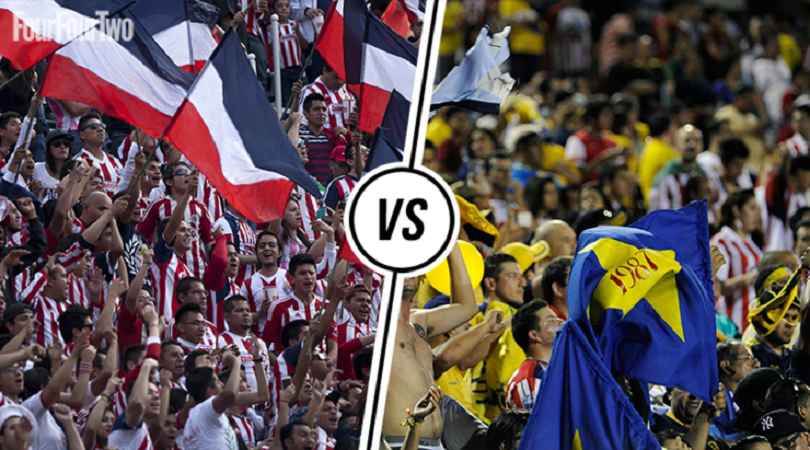
12. Chivas Guadalajara vs Club America
Football is big news in Mexico, and this is the biggest match: the two biggest and most successful clubs, each representing a different ethos. Playing at the iconic Estadio Azteca, capital club America are simultaneously Mexico’s most popular and most hated club, with a taste for buying in top foreign players – as opposed to the reputation for producing homegrown talent which typifies Chivas, the biggest team in Mexico’s second city.
They are the only clubs in Liga MX history to never get relegated, although Chivas have sailed ever closer in recent years. They’ll get little sympathy from America’s fans, who revel in the unofficial motto ‘Odiame Mas’ (“Hate me more”).
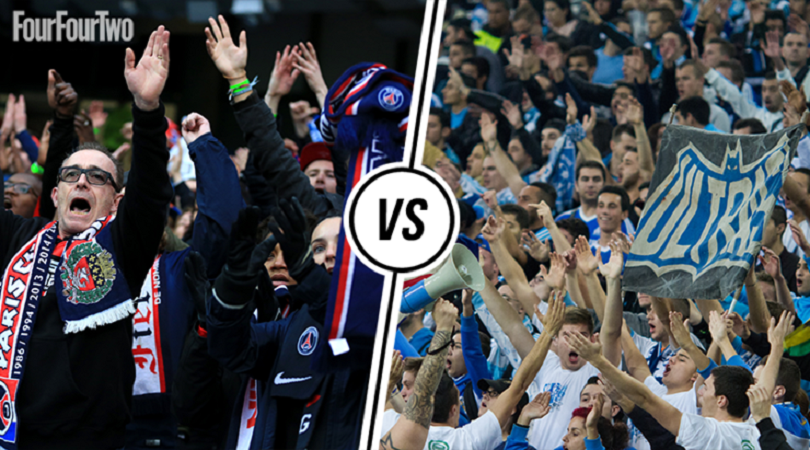
11. Marseille vs Paris Saint-Germain
In a country as centralised as France there has long been the potential for strife between the self-appointed metropolitan elite and the uppity provincial proletariat. Trouble is, for several decades Paris refused to play properly: while Marseille were formed in 1899 and successful for long periods ever since, PSG only emerged in 1970.
Despite being born poor in Paris, the (in)famous Marseille president Bernard Tapie despised PSG, whom he regarded as the nouveau-riche arrivistes; a natural promoter, he would mark the build-up to every Classique with media barbs about the opposition.
PSG began to attract right-wing extremists who, like the contemporary British hooligans waving Union Jacks, used patriotism as a cover for nationalism and racism – and Marseille, from a Mediterranean port city featuring a multi-ethnic mix of Spanish, Italian and North African immigrants, were an obvious nemesis.
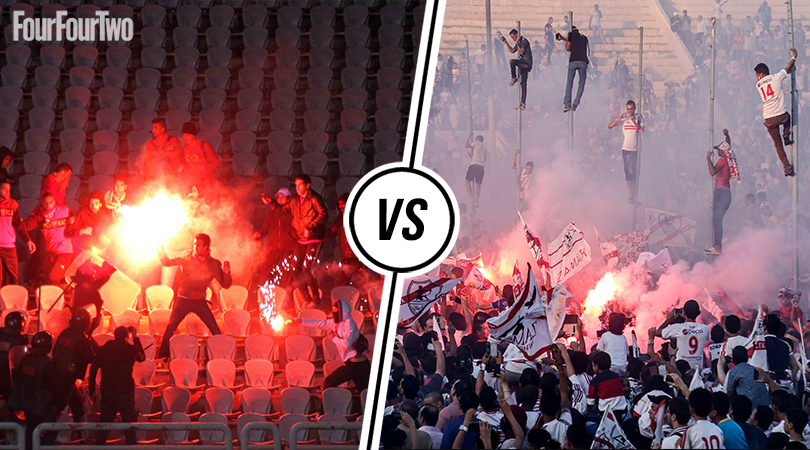
10. Ah Ahly vs Zamalek
Al Ahly vs Zamalek is where football meets history and politics, a wholly embraced excuse for Egypt to go mad for a bit.
Formed in 1911, Zamalek represented Cairo’s wealthy expatriates: the club’s early name of Al Mukhatalat (‘Mixed’) signified the combination of Egyptians and Europeans playing together. By contrast, Al Ahly means ‘National’, and from their founding in 1909 the club came to represent the rising nationalism and longing for independence from colonial interference.
Despite the weight of history, to many modern Egyptians the clash of Africa’s two most successful clubs is a fine opportunity for escapism from everyday life. Besides the estimated 50 million domestic TV audience, the game is huge all over North Africa and the Middle East.
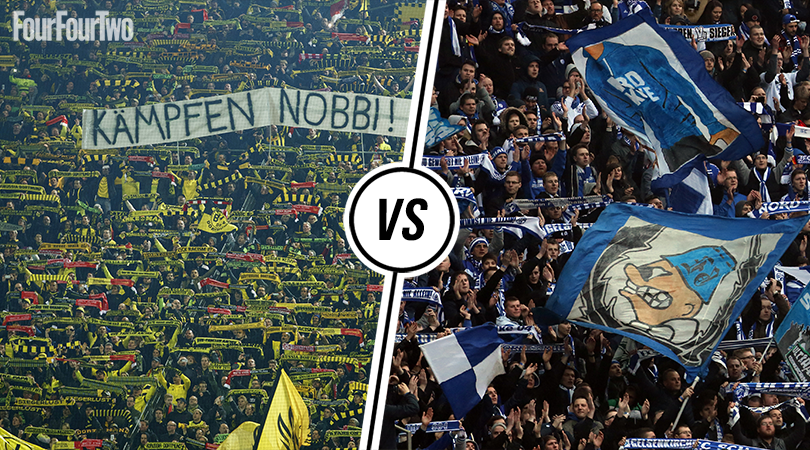
9. Borussia Dortmund vs Schalke
Borussia Dortmund may have been formed in 1909, but they weren’t even the dominant force in their own city until 1936. Schalke, from neighbouring Gelsenkirchen, held the championship of Westphalia for 21 consecutive seasons - but things changed on one grey afternoon in May 1947 when BVB finally broke the Schalke stranglehold with a 3-2 win in the driving rain.
Things grew even more intense after the launch of the Bundesliga in 1963. The mono-cultural Ruhr region – fired on coal and built on steel – slid into economic meltdown from the late 1970s and the area’s two most successful clubs were suddenly struggling to compete with teams elsewhere in the country. Football frustration and social despair soon blended with the sporting rivalry to yield frightening results, with hooligans from both clubs forming notoriously violent firms.
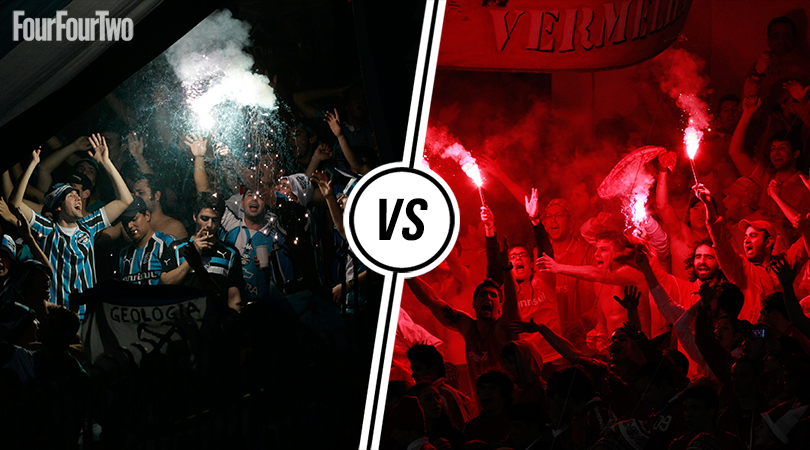
8. Gremio vs Internacional
Down in the southernmost state of Brazil, the Gaucho-country Rio Grande do Sul, you’ve got a choice: you’re either Gremio or Internacional. The two sides share the state capital Porto Alegre and command roughly equal slices of its metropolitan area’s 4.5m inhabitants, having carved up the Campeonato Gaucho state championship in similar style: of its 99 titles, they’ve won 82 (Inter shading Gremio 45 to 38).
Gremio are the older club, founded in 1903 by one of those rich enthusiasts who helped popularise the game we all love. But it was a private members’ club for those of German ancestry, which six years later irked the Italian-descended brothers Henrique, Jose and Luis Poppe into forming Internacional, the name a pointed snook cocked at the city rivals.
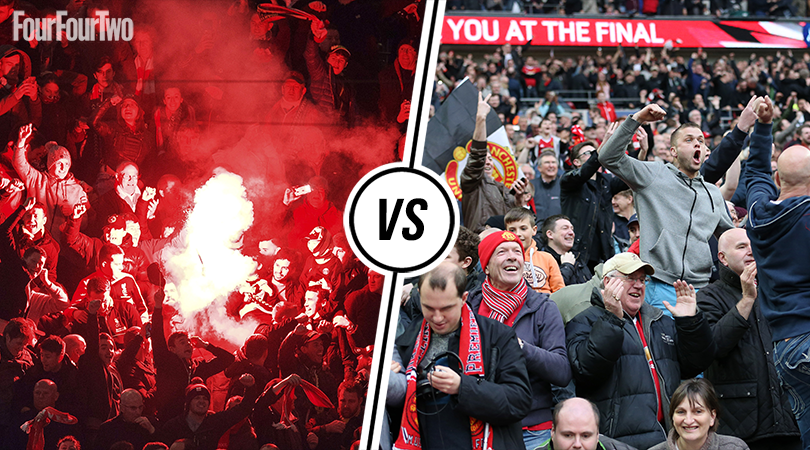
7. Liverpool vs Manchester United
First things first: we’re perfectly aware, thanks, that each of these clubs has its own local derby with nearby shades of blue. And we know full well that those parochial affairs are intense and important, to local pride and national tables.
But if you ask most fans of these two teams which opponent they most want to beat, it’s that lot in red, at the other end of the East Lancs Road; that bunch with the daft accents, the smug superiority complex, the lack of class, the iconically imperious Scottish manager and the trophy list which isn’t quite as impressive. Their alter ego.
The northwest giants have won 38 top-flight titles, while the rest of the country’s combined efforts come to 82; 24 of their triumphs came between 1973 and 2013, with each having a two-decade dominant period which no other English side has come even close to matching.
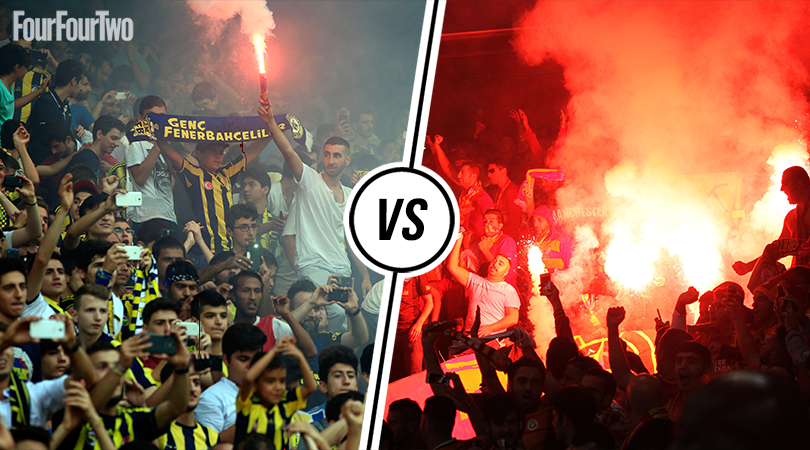
6. Fenerbahce vs Galatasaray
There’s never been much love lost between two Istanbul clubs from different sides of the Bosphorus – in fact, from different continents. Galatasaray are from Europe, Fenerbahce just a few miles east in Asia.
The Intercontinental Derby doesn’t fit neatly into any of the classic paradigms for local rivalries. There’s no ethnic split between the clubs and no religious divide, although historically, social class played a part in forging the identity of each. In the 1970s, a leading Turkish academic (and Fenerbahce fan) described Galatasaray as the club of the Europeanised aristocracy, labelling Fenerbahce as the club of the bourgeoisie.
Galatasaray were founded by old boys from Istanbul’s equivalent of Eton, the Galatasaray High School, a 400-year-old institution built to provide a French-language education for the elites of the Ottoman Empire. Fenerbahce, meanwhile, were built on the new money of an economically thriving Anatolia and regarded as a microcosm for the rapidly modernising Asian Turkey: ambitious, hard-working, financially astute.
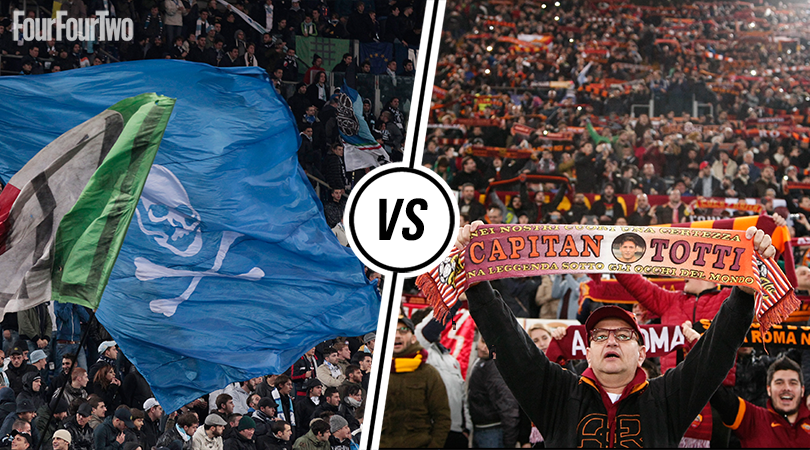
5. Lazio vs Roma
It’s unusual for a capital-city derby to feel so parochial, but the Rome rivalry rarely affects matters at the top of the table: Roma and Lazio have collected only five scudetti between them. While the colder northern cities hoover up the trophies, the games that matter to Roman fans are for local pride, for bragging rights in the bars and piazzas of this warm Mediterranean city where neighbours coexist in public spaces.
As Paolo Di Canio puts it: “Apart from the Old Firm, nothing compares with the derby of the Big Dome. The build-up is huge, nothing else matters. Roma and Lazio fans care more about winning the derby than where they finish in the league.”
Witty and ironic, the Roman temperament is well-suited to football fandom. Sharpened on the street, the banner-based banter between Lazio’s Curva Nord and Roma’s Curva Sud can be as eye-catching as the game itself.
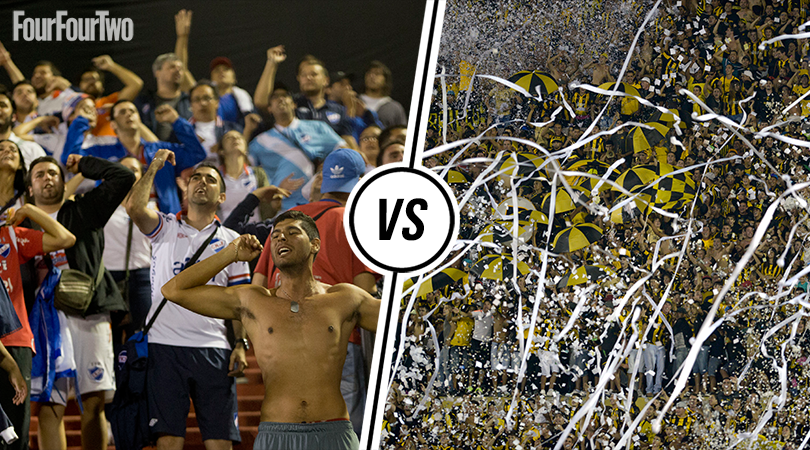
4. Nacional vs Penarol
If you were called upon to construct the ideal derby, your ingredients might be as follows: longevity, mutual national pre-eminence, a historical schism, legendary venues, breathtaking tifos, comic escapades and recent beefs. No need to get inventive: just get to Montevideo. Nacional and Peñarol are the oldest club rivals outside the UK, having played their first derby back in 1900.
They bicker about who’s the oldest: Peñarol claim they popped out in 1891 as the Central Uruguay Railway Cricket Club, later changing their name to the district they played in. Nacional (1899) claim that makes them the older club.
Nacional’s name hints loudly at a more important shibboleth. Like many a 19th-century South American club, Peñarol were founded by and largely for European immigrants, in this case English railway workers; by contrast, Nacional were the first South American club founded without any Old World involvement/interference, hence the moniker.
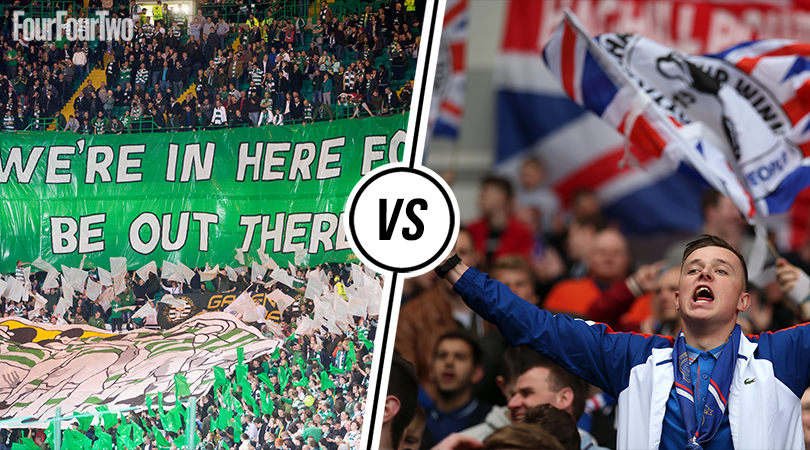
3. Celtic vs Rangers
It’s a rivalry that has undoubtedly been stoked by sectarianism, but the Old Firm actually got off on a fairly friendly footing. Rangers had recently moved to their new permanent home on the south side of Glasgow when Celtic were founded in 1888, with the intention of raising money from matches to distribute to the poor and disadvantaged of the east end.
But as time went on, hostility increased. The city’s Catholic population, largely Irish and disadvantaged, had started to become victims of discrimination. Meanwhile, new laws allowing Catholic schools to be funded and run by local authorities created ill-feeling among the Protestant establishment. As Celtic grew ever closer to their Catholic origins, Rangers became more entrenched in Presbyterianism.
Tensions remain between Celtic and Rangers fans to this day. Although the introduction of legislation banning bottles, cans and alcohol in Scottish grounds helped to quell violence, the stigma of sectarianism is not so easily washed away.
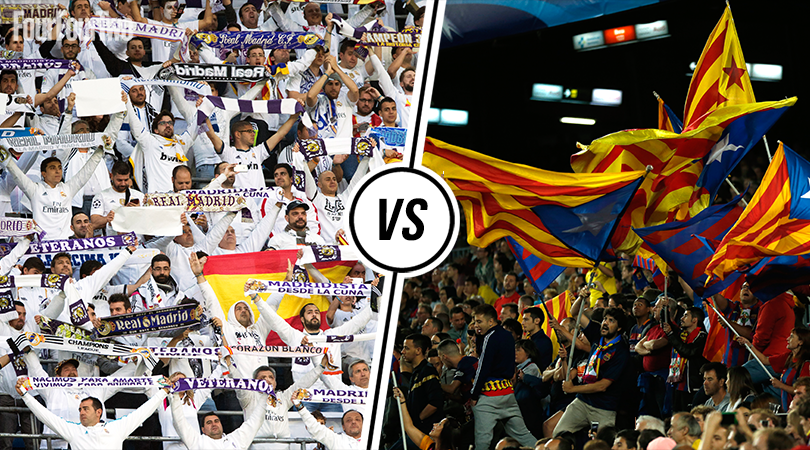
2. Barcelona vs Real Madrid
Bobby Robson’s description sums up the beef at the heart of this rivalry: “Catalunya is a country and FC Barcelona is their army.” In fact, Catalunya is an autonomous community within Spain (although recent political upheaval may change that in either direction), and Barça’s players don’t usually take to the field in tanks, but the world-famous football team is the most visible manifestation of Catalan pride.
It always was, which presented problems when Franco would really rather everyone knuckled down as straightforward Spaniards. Like the Basques, Catalans felt squeezed by a centralised government who sought to ban their language and culture. It’s rarely wise to protest against a government led by a General, so Real Madrid stood as a cipher for the regime, football a focus for the discontent.
They’re also by far Spain’s biggest and best clubs, winning 57 (Madrid 33, Barcelona 26) of 88 national league titles. This is arguably the planet’s most eagerly-awaited and widely-devoured sporting fixture.
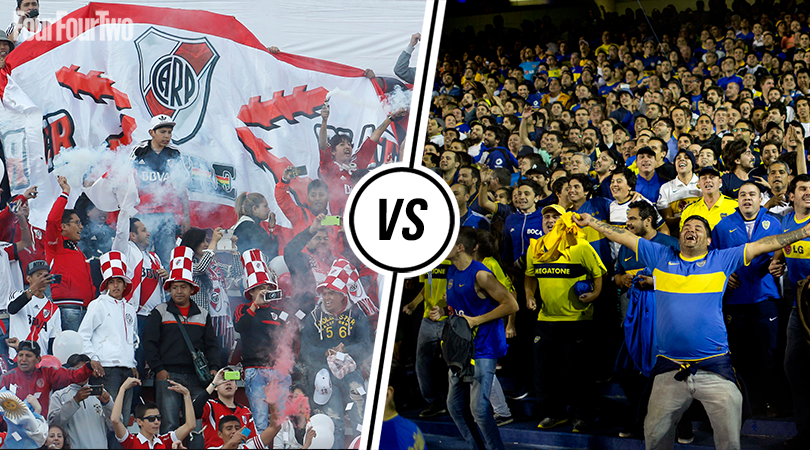
1. Boca Juniors vs River Plate
Football lends itself well to class warfare. Codified at public schools but beloved of the working class, it was exported around the world by a combination of the adventurous officer class and the workers who built empires, military or commercial. And it’s at the heart of the world’s best derby.
Boca-River is not the only rivalry on our list to be sparked by status anxiety and snobbery – leaf through the other 49 and you’ll find plenty of examples of hoi polloi vs bourgeoisie. But it’s the brightest, brashest and most brilliant example of its kind.
As Martin Mazur of El Grafico puts it: “A hundred years ago it was about working class vs aristocracy. Today it’s just about hate. The on-pitch atmosphere reflects the 2,000 policemen that patrol the stadium: bust-ups, red cards (two per game is common) and controversy are part of the derby. Attending a Boca-River game, especially at La Bombonera, is a once-in-a-lifetime experience.”
Greg Lea is a freelance football journalist who's filled in wherever FourFourTwo needs him since 2014. He became a Crystal Palace fan after watching a 1-0 loss to Port Vale in 1998, and once got on the scoresheet in a primary school game against Wilfried Zaha's Whitehorse Manor (an own goal in an 8-0 defeat).

